One of the most beautiful places
I think the Palpuognasee in Switzerland is one of the most beautiful places to walk around. For a few years now I have been going to Switzerland for a weekend in October to visit this area. In early autumn the larch trees are a beautiful golden yellow, which makes the mountains even more beautiful than they already are. In 2017 I was lucky that the weather was still beautiful, which allowed me to take the picture below. The contrast and colors almost make it not seem real, but it can still be so beautiful here.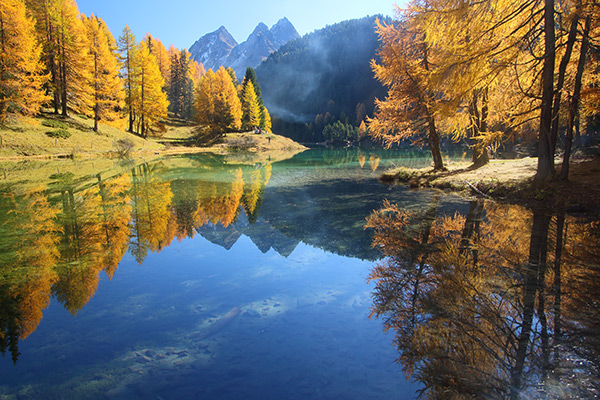
After a day of walking around this lake, I also visited Lago-di-Saoseo. Quite a long but beautiful walk. But once you arrive at the top of this lake, it is definitely worth it. In real life it was more impressive than this photo. But this is also definitely a place to return to.
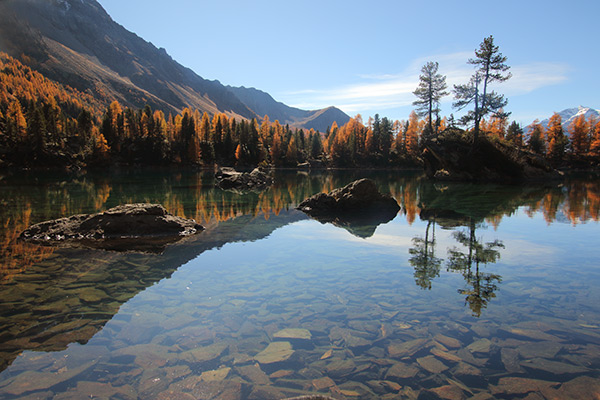
End of the 2017 butterfly season
After the summer holidays, the butterflies in the Netherlands always start to decline rapidly, and I also notice that I could use some extra rest. Still, you try to go out every now and then, but usually without much success.In August I went looking again for the Silver Moon - Boloria selene. There were still plenty of butterflies to be found, but it was clear from all the butterflies that they had had their best time. Despite that, of course I still tried to take a photo.
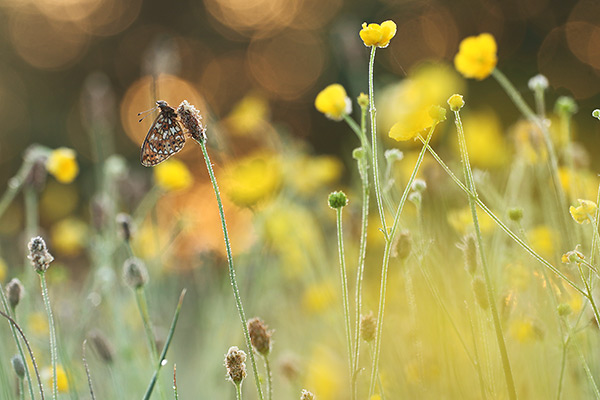
One of the species that is usually one of the last to be found in the year is the Lycaena phlaeas - Small Copper. A beautiful little butterfly that for some reason I hadn't taken a photo of in years. If it is a beautiful morning with lots of dew, I can't resist taking a nice close-up.
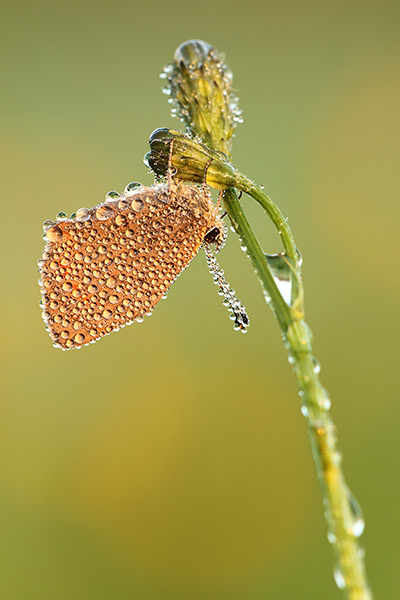
A little further on in the same field there is another specimen from which I sit a lot further away, which gives a completely different photo, but in my opinion certainly no less. I will definitely have to go back in 2018 to do some more work on this butterfly, because I can certainly take a much better photo of it...
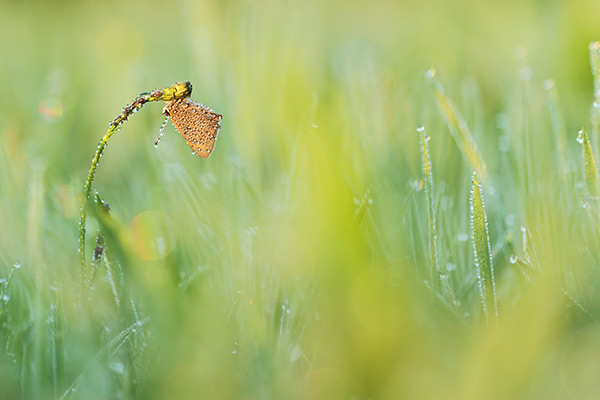
Summer holiday Corsica (2017)
At the time I am posting this message, I am almost ready for the summer holidays of 2018, but it is always nice to look back.From July 7 to July 29 we went on holiday with the whole family to Corsica and part of Italy. For anyone who has never been to Corsica, I can wholeheartedly recommend visiting this beautiful island. Beautiful villages, beautiful nature with high mountains and white beaches. In addition to this beautiful landscape, there are also very beautiful and special butterflies to be found. A handful of the butterflies found on this island are endemic to Corsica and Sardinia, which makes this even more special. Now the holiday with the family is not really meant to take pictures all day, but I did take a few moments out to take some pictures.
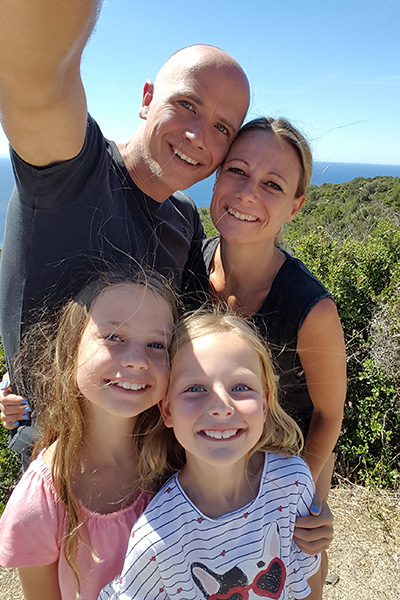
The butterfly at the top of my list to find was the Papilio hospiton - Corsican Swallowtail. Unfortunately I was already a bit late in finding this species, but on July 10 I made an attempt. Because the distance to the place where I wanted to search was quite a journey and I did not want to wake the family up early, I went to the destination the night before to sleep in the car for the night. Went for a walk early the next morning. The landscape was ultimately more difficult to navigate than I had expected and it was quite a climb. At first I only found some Corsican haybird - Coenonympha corinna which was also a nice and new species for me, but not really very special. Then I found a late Plebejus bellieri - Bellier's Blue. A very old copy, but still very nice to photograph. And in addition, there was also the Lasiommata paramegaera - Corsican Wall Brown. Very quickly it became super warm and I was planning to walk back when I came up with the idea of looking for a caterpillar of this Papilio hospiton - Corsican Swallowtail. This wasn't easy either, but I was eventually able to find one. Beautiful animal!
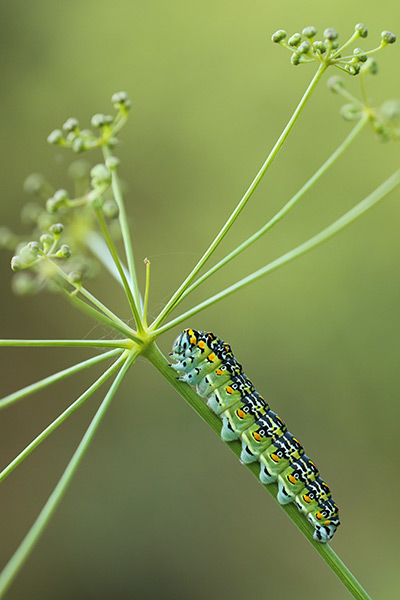
When I climb towards the car a little later, a Papilio hospiton - Corsican Swallowtail suddenly flies over. I try to follow the butterfly as quickly as possible and when it settles down I can clearly see that this is the Corsican variant. After 2 photos of the top, the animal flies away again, after which I get a 2nd chance from the outside. A few seconds later it's over and the butterfly flies to the next mountain. In the meantime I'm completely fed up and I head back to the car to drive back to the family who are waiting for me.
A little later in the holiday we spend a few days in the north, which has fairly high mountains. During our car journeys I stop every now and then to see if there are any special butterflies to be found on, for example, flowering blackberries. After stopping several times without success, I find the Argynnis elisa - Corsican Fritillary on the way to the highest point of Corsica . I'm trying to take some pictures, but without much success unfortunately. I decide to go back the next day for a retake. No sooner said than done and the next day I stand in the same spot, and every now and then a wildly fluttering fritillary butterfly passes by. After waiting a few hours in front of a group of thistles in the blazing sun, I manage to take some reasonable pictures of this special Fritillary butterfly.
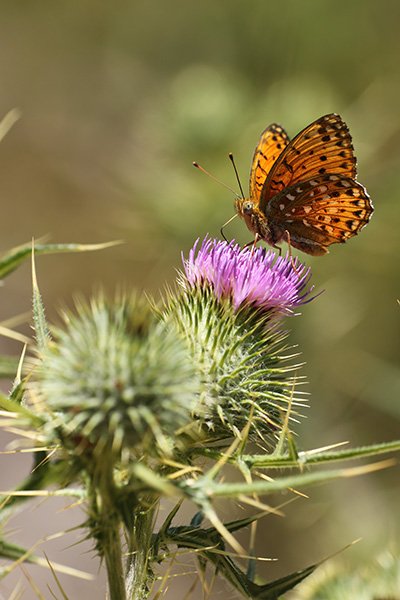
Since I don't expect to take much better photos, I don't spend much more time on this. Somewhere along the way I come across some Tyrrhenian lantern - Ischnura genei - near a ditch, which of course I have to photograph, but that's it.
After two weeks in Corsica, we travel through Italy for another week. We start with a day in Pisa and then drive further towards Lake Maggiore. Because I am now quite close to Switzerland, and I always want to get a photo of the Geelbanderebia, I am going away for another evening to sleep in the car on top of a mountain. The next day will be another very long walk over narrow paths, and of course again without seeing a single Erebia flavofasciata - Yellow Banded Ringlet. This is now the third year in a row that I have attempted to find this butterfly and each time without success. Even though I keep looking, I can still take some other photos here and there, but for the Erebia I have to go back again. After this attempt at butterflying, it is finished and we round off the holiday quietly.
Heteropterus morpheus - Large Chequered Skipper
Because it has been a long time since I had seen a Heteropterus morpheus - Large Chequered Skipper, I thought it would be fun to look for this species again. Even though I had some doubts about the weather, I set my alarm on time and went out in the dark. Once we arrived at the right spot, it was easy to find several sleeping Spiegeldikkopjes. Unfortunately, I was not the first, and there had already been several people before me, who also found it necessary to crush the entire vegetation, including host plants. Fortunately, I was able to simply pick a butterfly from the path and photograph it quietly. The one below sat very nicely on a Vetch flower.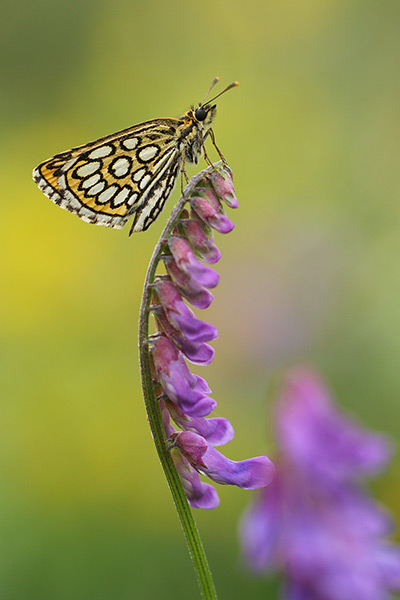
Boloria aquilonaris - Cranberry Fritillary
In mid-June I went looking for the Boloria aquilonaris - Cranberry Fritillary. Due to the large amount of fog, the weather turned out to be less sunny than I had expected. But despite that, another successful picture of this butterfly in its natural environment.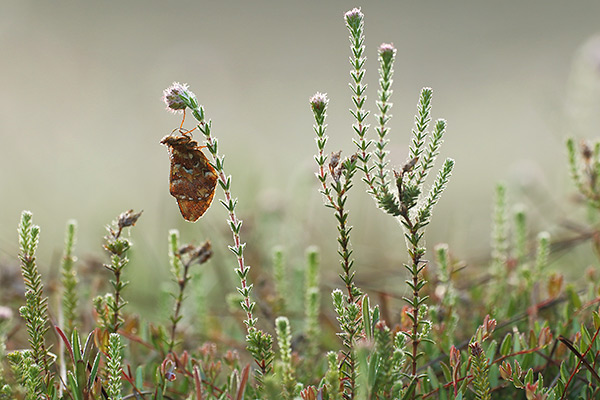
Hungary June 4/6
I am going to Hungary for a long weekend together with Peter and my father-in-law. Actually, I had planned to stay in the area more, but due to the bad weather in the region I had no better idea. Since I always hope to take a nice photo of the Violet Fire Butterflies, this was a good reason to drive east again. We start the journey early in the morning, and without any problems or delays we cross the border with Hungary after about 12/13 hours. From that moment on, bad luck starts to strike. The tire pressure light on my dashboard comes on. We stop at the first gas pump and hope to continue driving after inflating the tire in question. Unfortunately, the same light soon comes on again and there seems to be a real leak in the tire. An additional problem is that I don't have a spare tire and that it is almost 6:00 PM on Saturday. After making some calls to emergency services, it appears that the only way to get help this day is to go back to Austria and wait there for a tow truck that can help us further. So there is no other option to pump up the tire again and try to reach Austria. With a very empty tire we finally arrive at the agreed location just across the border. Of course, there is no tow truck in sight. Several phone calls and hours of waiting, an emergency service finally appears. Once we are in and charged, we first have to drive an hour to the person who can fix the tire and of course it is also an hour in the wrong direction. By the time we arrive it is already dark, but we are helped nicely and after half an hour we can continue our journey again. Ultimately we don't arrive at our destination until around 2:00 am.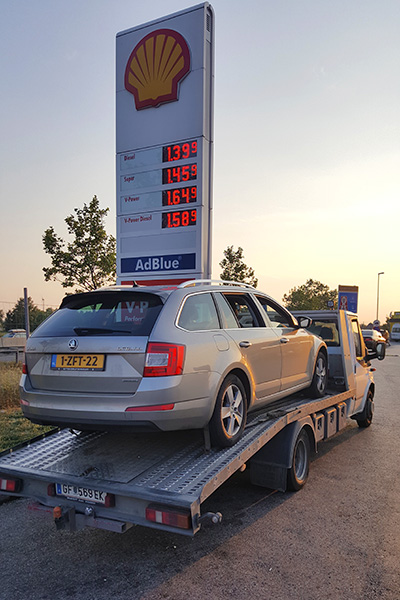
After two hours of sleep, the alarm goes off again. Because we have all barely slept, no one is awake, and in all the drowsiness, Peter's camera falls on the stone floor. The camera only works halfway for the rest of the weekend, which doesn't make things any easier. When we then drive a bit and arrive at the place where we hope to find butterflies, the weather seems to be perfect and the surroundings are beautiful. Due to the tiredness and unfortunate start of the morning, it is not very possible to take good photos. Actually, I don't take a decent photo all morning. The only nice thing is this fresh Lycaena dispar - Large Copper.
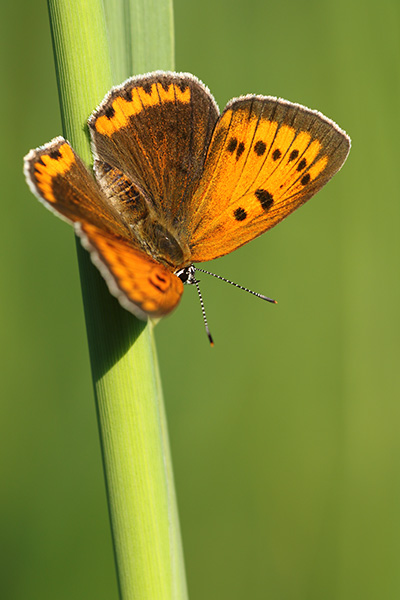
Then when it gets warm we look for Lycaena alciphron - Purple-shot Copper. We start at the higher places, but here it is still too early and there are still Boloria selene - Small Pearl Bordered Fritillary flying instead of Lycaena alciphron - Purple-shot Copper. But after visiting a few different places, we find a nice sheltered spot where we find several Lycaena alciphron - Purple-shot Copper. Of course it is about 30 degrees and everything is flying behind each other, so the photo I hope to take is not among them. After a few hours we call it a day and decide to come back the next day.
The next morning we start again with a lap on the field where we started the day before. This time there are even more butterflies to be found, it is simply bursting with Brenthis hecate - Twin Spot Fritillary. But because there is always something to be expected, it is now too hot and cloudy, and because I am also tired, the camera barely comes out of the bag. Almost reluctantly I take a few more pictures of the Fritillary, but this doesn't make me very happy either.
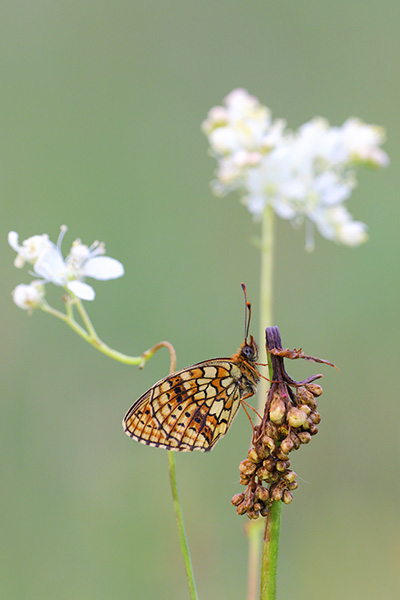
By the time everything is flying around again, we continue to the place where we stopped yesterday to continue looking for the Violet Fire Butterflies. Because of the heat and because we are all still very tired, we quickly give up and take a nice nap in the grass. When we make a second attempt a few hours later, the weather cooperates for a while by allowing a cloud to slide in front of the sun every now and then. This doesn't immediately produce great pictures, but I at least take a sharp photo of a reasonably fresh male. We continue to struggle for the rest of the day, but unfortunately it doesn't get any better.
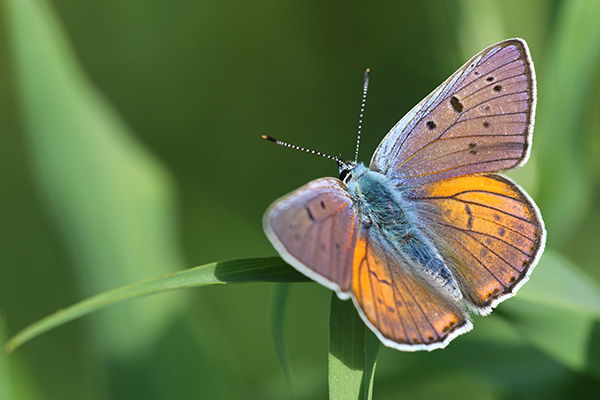
The next morning it is time to go back to the Netherlands. We drive past the fritillary butterfly spot, but it is so warm this morning that everything is already flying when we walk through the field. We soon call it a day and walk back to the car to start the return journey.
Boloria eunomia - Bog Fritillary
The weekend of June 3 and 4 we drove to the Ardennes with the family to camp for a short time. The weather was wonderful, and we also enjoyed sleeping in the tent. Because we were in the area of several beautiful butterfly spots, I drove to the Lycaena helle - Violet Copper one morning. Unfortunately, there were no sleeping specimens to be found, but with a lot of effort I did find a sleeping Boloria eunomia - Bog Fritillary. The photo is not exactly what I had in mind, but at least it is not a standard close-up.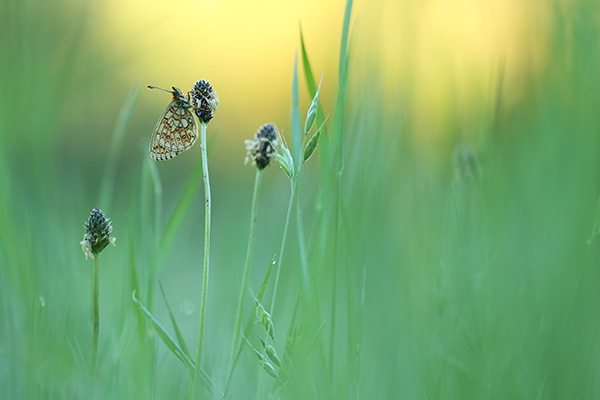
Lycaena helle - Violet Copper
Some time ago (May 21) I was looking for Lycaena helle - Violet Copper as usual. On Friday evening we drove to the Eifel where we slept in the car for the night. Then got up early to go searching.Finding sleeping fireflies was not easy, and we ended up having to wait hours until the first butterflies started flying. But because it was a cold night, all the butterflies slowly started to warm up, which gave plenty of opportunities to photograph open butterflies. All in all, I managed to take two photos that I am satisfied with. The photo below of a beautiful fresh male shows the blue glow quite well.
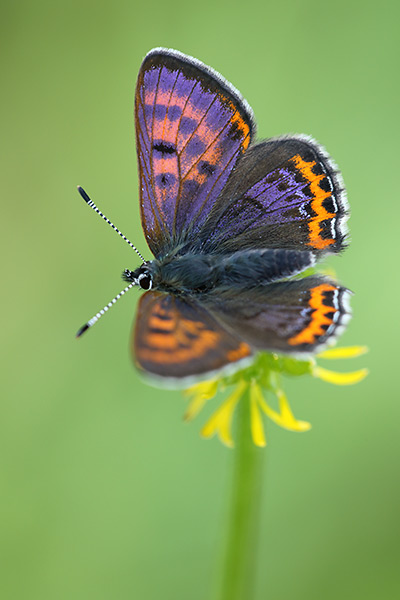
Southern Spain April 8 to 12
On Saturday, April 8, I will fly with Peter Groenendijk at 5:00 AM from Schiphol to Malaga (Spain). It is also early in the year for butterflies in Spain, but that is why a few special species can be found.Once we arrive, we pick up a rental car and drive south-east to the Bazae area. The drive here is quite beautiful, strange landscapes and snow on the Sierra Nevada. After lunch we arrive at our destination. No beautiful fields with flowers here, but only bare sand dunes with large clumps of grass as far as you can see.
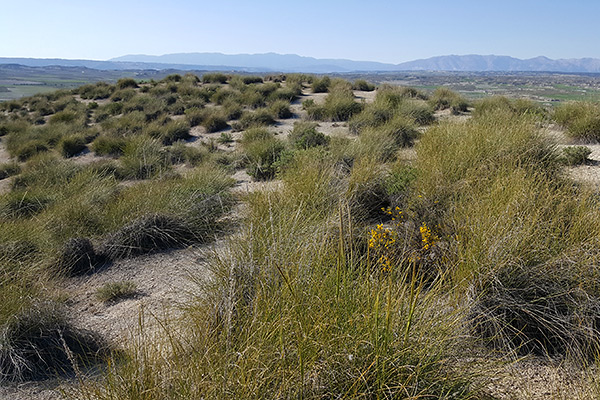
Despite the monotonous landscape, we soon find the first butterflies. In addition to some other whites, mainly Lesser Marbled Whites - Euchloe tagis - fly here. Since I don't have this species yet and it is very difficult to find outside Spain, this is of course great. Unfortunately, as is often the case with white birds, it turns out to be virtually impossible to take decent photos of this because of the nice weather, and therefore the busy butterflies. After spending half the afternoon chasing flying white butterflies, a yellow butterfly finally passes by. This is the Euchloe bazae - Greenish Black-tip that I was mainly hoping for. Compared to the whites, these are even more difficult to photograph as they never sit down and fly much faster. At the end of the day I have a bad photo of a Green Marbled White from very far away, otherwise all the effort so far has been for nothing. In the meantime it is starting to cool down quickly and before we leave, we try to find some sleeping Whites to be assured of butterflies the next morning, and before it is dark we have found three sleeping Lesser Marbled Whites. We try to remember the places and leave for the hotel for dinner and a good night.
After a good night's sleep we immediately leave for the same place as yesterday in search of the whites. Once we arrive, all three are still in the same place as we found them and we can finally take pictures in peace. After an hour it gets too hot and everything starts to fly, but the Small Marbled Whites are in the photo.

Now that everything is starting to fly carefully, we hope to find more Euchloe bazae - Greenish Black-tip, but alas. We make another attempt to find another place in the area, but about four hours later we still haven't found anything. We decide that this no longer makes sense and is a waste of our time. After lunch we get in the car to head to the south-east coast.
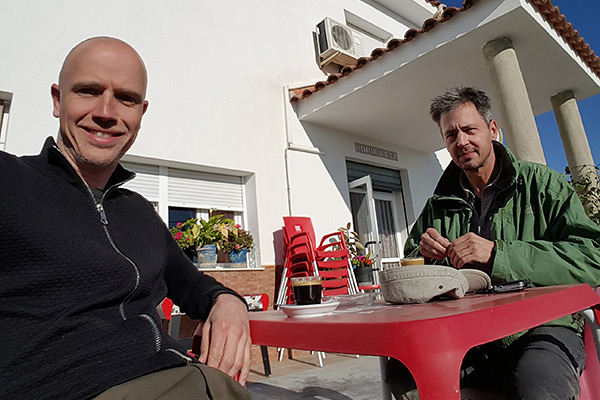
After about two and a half hours of driving we arrived at the next place where we want to find the Tarucus theophrastus - Common Tiger Blue. After a few minutes of searching we found the first specimen, and soon we found several of these beautiful little butterflies. Because of the warm weather, these butterflies are also quite busy and difficult to follow, but here and there one will cooperate and after an hour or two we have a photo that we are both happy with.
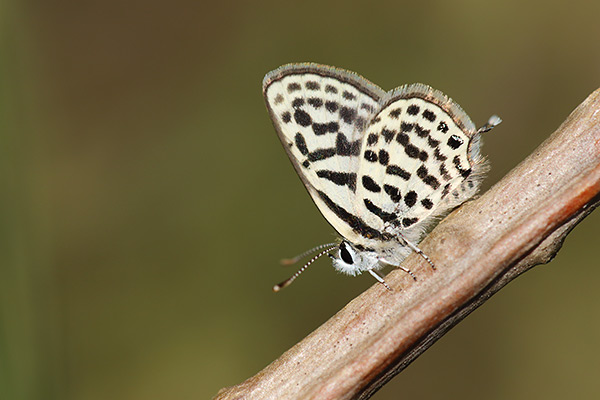
The last attempt of the day will be the False Orange Tip – Colotis evagore. Peter has a place where this beautiful butterfly could possibly fly, but once it arrives at its destination, there is nothing to be found. Because we still have to drive all the way west, we don't linger any longer and drive a few more hours to arrive at our next hotel in the Ronda area in the dark.
The next morning it is still quite chilly and there is a strong wind. We are looking for the Tomares ballus - Provence Hairstreak in a large valley. That sounds quite nice, but at the moment it is nothing more than a plain with short grass and dead thistles. This landscape in combination with wind force 6 does not create the best photo conditions. Fortunately, we quickly find the first sleeping clover page on a dead thistle, and an additional half hour of searching yields about 8 specimens. Unfortunately, they all appear to sleep on large dead thistles.

As it gradually starts to warm up, more butterflies start flying around, although the numbers are still low. We see a single Yellow Orange Tip - Anthocharis euphenoides and here and there a Spanish Pipe Flower Butterfly - Zerynthia rumina. There are also reasonable numbers of Green Clover Pages, occasionally a nice fresh specimen. These butterflies don't actually do anything other than sit somewhere among the short grass and fly further when you come close. Once the sun shines brightly and it is nice and warm, the butterflies seem to calm down a bit and we finally manage to take a nice picture.
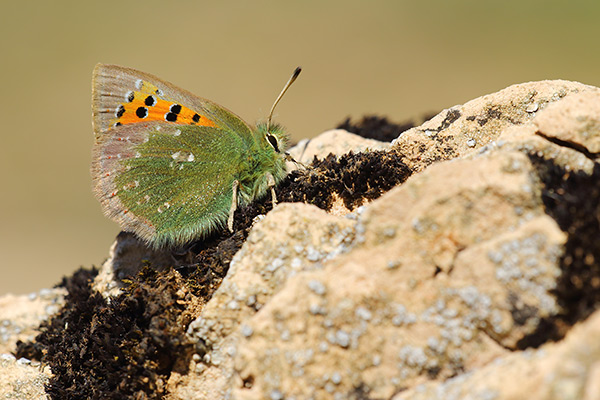
Towards the end of the afternoon the weather cools down quickly and we walk back to the car. When we are almost there, a Yellow Orange Tip flies around, clearly looking for a place to sleep for the evening. We keep an eye on the butterfly from a distance to see where it will sit. After half an hour she has found a nice spot on a Brem and decides not to fly anymore. For us, just a nice end to the day before it gets too dark.
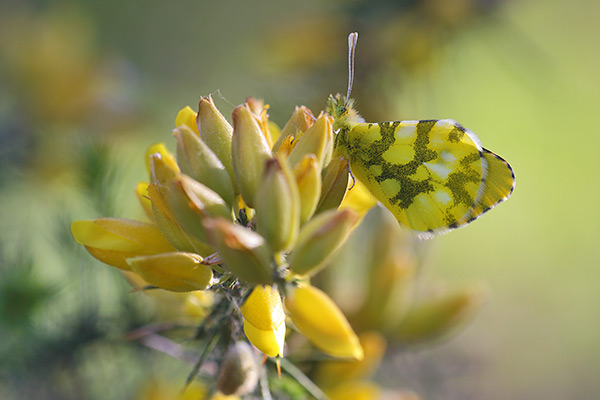
It is already the penultimate day and we are going to look for some other species again. Just before the sun makes everything too hot, we arrive at a place where we find the Pseudophilotes abencerragus - False Baton Blue. In the shade of the trees we find a few sleeping butterflies. After taking pictures for about twenty minutes, the sun comes out and soon all the butterflies are flying around like crazy.
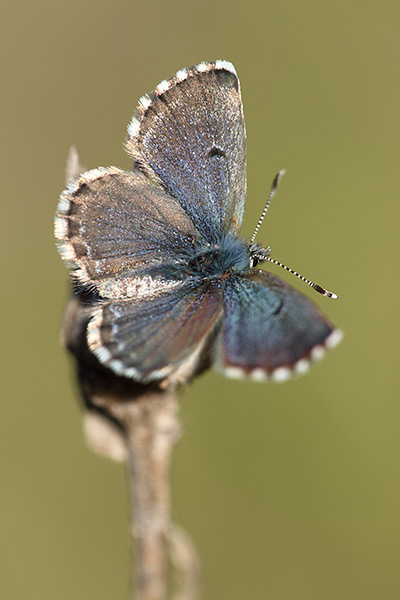
Because there is no point in staying here, we drive on to a place for Checkers. Unfortunately we have no success here. After searching for an hour, we are no further than 2 white birds flying past. We drive further and decide to search various fields and roadsides for butterflies. In the end we were on the road all day and were barely able to take any photos. When it starts to get dark we are already enjoying dinner with a beer.
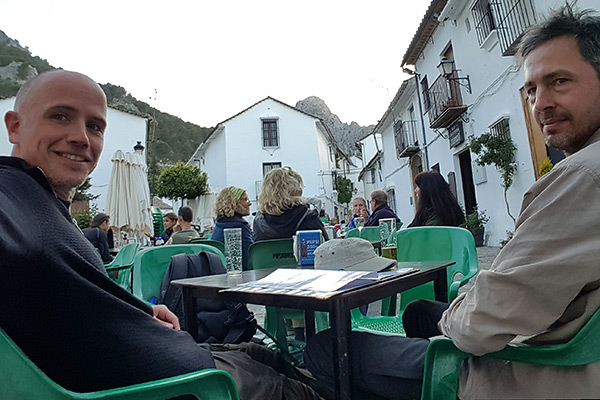
The last day has already arrived, but because I don't fly until around 6:00 PM, there is still plenty of time to visit one last spot. We are looking for the Cupido lorquinii - Lorquin's Blue. Within two minutes after we got out of the car I found the first copy. Fortunately it is not very warm yet and we can take some pictures. Eventually we also find a second butterfly, but we cannot find more. When we are almost fed up, a newly emerged Zerynthia rumina - Spanish Festoon suddenly flies past. Since it is still early enough, we take some time to photograph this beautiful butterfly. Once we finally have this butterfly neatly placed, it is really over and we continue the journey to the airport.
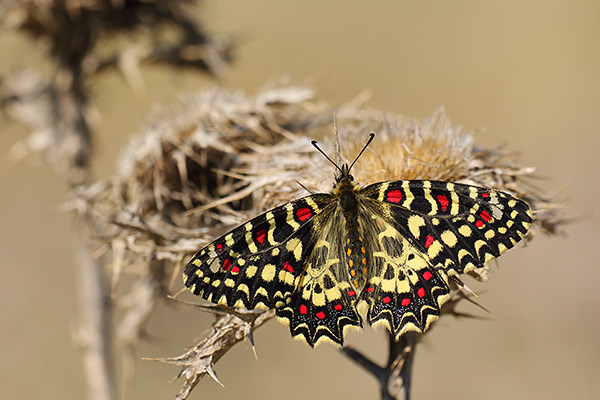
Cordulia aenea - Downy Emerald
On April 30 I went to the Weerribben for the first time to look for emerging dragonflies. We were still a little too early in the year for most species, but the Cordulia aenea - Downy Emerald were already so far along. Below is the result of the first dragonfly photo of 2017.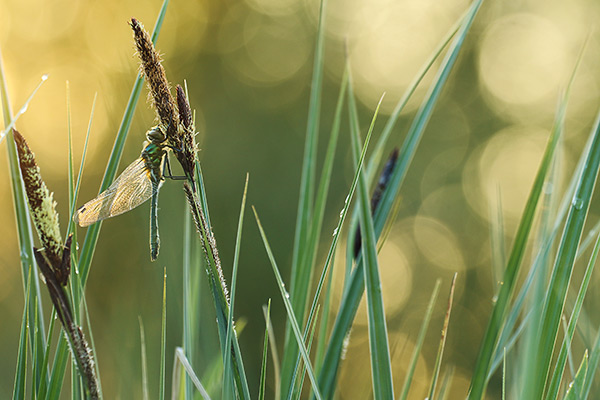
Night frost
The night of April 19 to 20 was very cold, with heavy frost. Of course an attempt had to be made to find Orange tips. Found a nice field near Zwolle, with piles of pink flower, but unfortunately no butterfly to be seen. After some more fanatic searching, it turned out that most butterflies had fallen off or jumped from the flower due to the cold. Unfortunately so. Finally found an Orange Tip, but unfortunately in a not so nice place. This meant that no special photo was taken, but a real close-up so that the cold is clearly visible.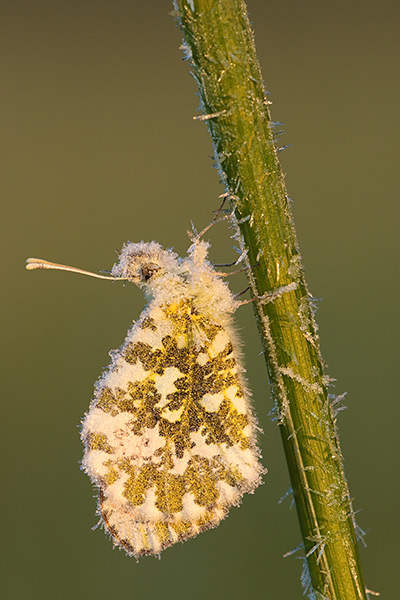
Archive:
Blog 2023
Blog 2022
Blog 2021
Blog 2020
Blog 2019
Blog 2018
Blog 2017
Blog 2016
Blog 2015
Blog 2014
Blog 2013
Blog 2012
Blog 2011
Blog 2010
Blog 2002 - 2009
Links: Peter Groenendijk Bernard Fransen Jordi Strijdhorst Johannes Klapwijk Matt Rowlings Guy Padfield Roger Gibbons Morten S. Molgaard
Links: Peter Groenendijk Bernard Fransen Jordi Strijdhorst Johannes Klapwijk Matt Rowlings Guy Padfield Roger Gibbons Morten S. Molgaard